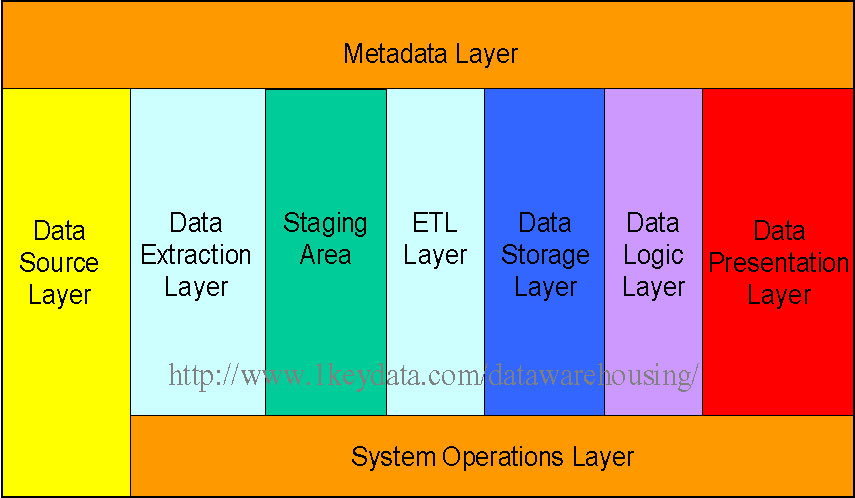In general, all data warehouse systems have the following layers:

Each component is discussed individually below:
Data Source Layer
This represents the different data sources that feed data into the data warehouse. The data source can be of any format -- plain text file, relational database, other types of database, Excel file, ... can all act as a data source.
Many different types of data can be a data source:
Data Extraction Layer
Data gets pulled from the data source into the data warehouse system. There is likely some minimal data cleansing, but there is unlikely any major data transformation.
Staging Area
This is where data sits prior to being scrubbed and transformed into a data warehouse / data mart. Having one common area makes it easier for subsequent data processing / integration.
ETL Layer
This is where data gains its "intelligence", as logic is applied to transform the data from a transactional nature to an analytical nature. This layer is also where data cleansing happens.
Data Storage Layer
This is where the transformed and cleansed data sit. Based on scope and functionality, 3 types of entities can be found here: data warehouse, data mart, and operational data store (ODS). In any given system, you may have just one of the three, two of the three, or all three types.
Data Logic Layer
This is where business rules are stored. Business rules stored here do not affect the underlying data transformation rules, but does affect what the report looks like.
Data Presentation Layer
This refers to the information that reaches the users. This can be in a form of a tabular / graphical report in a browser, an emailed report that gets automatically generated and sent everyday, or an alert that warns users of exceptions, among others.
Metadata Layer
This is where information about the data stored in the data warehouse system is stored. A logical data model would be an example of something that's in the metadata layer.
System Operations Layer
This layer includes information on how the data warehouse system operates, such as ETL job status, system performance, and user access history.
No comments:
Post a Comment